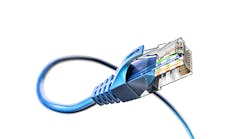The numerous barriers to deploying high-speed, Ethernet-enabled instrumentation in hazardous process automation facilities took yet another step forward with the formal introduction of Ethernet-APL, the new two-wire, intrinsically safe (IS) physical layer suitable for use in demanding process automation applications.
Ethernet-APL’s benefits include dramatically improved communication speed, hazardous-area reach, power to field instrumentation and long cable runs. Leading standards development organizations FieldComm Group, ODVA, OPC Foundation, and Profibus & Profinet International (PI), as well as 12 major industrial project partners, have worked together successfully over the past three years under “The APL Project” to create this new physical layer solution for field instrumentation. With the June release of the specifications, engineering guidelines and conformance test plans by the APL Project, end users can now expect components from leading suppliers, with first products now available from select vendors, according to a press statement released by the project's principals.
In short, Ethernet-APL is an extension of the specification for single-pair Ethernet (SPE) based on the 10BASET-1L standard, which can support every higher-order Ethernet communication protocol. By making adjustments to the physical layer, the requirements necessary for reliable operation in process-related plants are satisfied. These requirements include high-speed, Ethernet-based communications, safe operation in potentially explosive areas, and an ability to install long cable lengths up to 1,000 meters. The electrical parameters that an Ethernet-APL device must meet to ensure IS ignition protection are defined in the technical specification of the IEC TS 60079-47 standard (2-WISE or two-wire IS Ethernet).
“We're very pleased to release the carefully crafted technology specifications and engineering guidelines to enable Ethernet-APL technology to start to transform the field of process plants,” comments Dr. Jörg Hähniche, chair of the APL Steering Committee. “The high level of cooperation across multiple standards development and vendor organizations within the APL Project has resulted in one future-oriented Ethernet physical layer for process automation. This technology launch is a key progress marker, and the development journey will continue now with products in the pipeline from significant industry partners.”
The APL Project has defined port profiles to create the Ethernet-APL concept for multiple power levels with and without hazardous area protection. Ethernet-APL port profiles, including electrical power classes, shield connection options and segment lengths, have been finalized. Markings on devices and instrumentation will indicate power level and function as sourcing or sinking. This will provide a simple framework for interoperability from engineering to operation and maintenance. Engineering guidelines and best practices for planning and installation are also now complete, and available in an engineering directive document intended to support users when designing and commissioning networks using Ethernet-APL. These guidelines should help facilitate knowledge transfer to industry practitioners. Further, the use of standard Ethernet diagnostic tools will provide a shallow learning curve.




